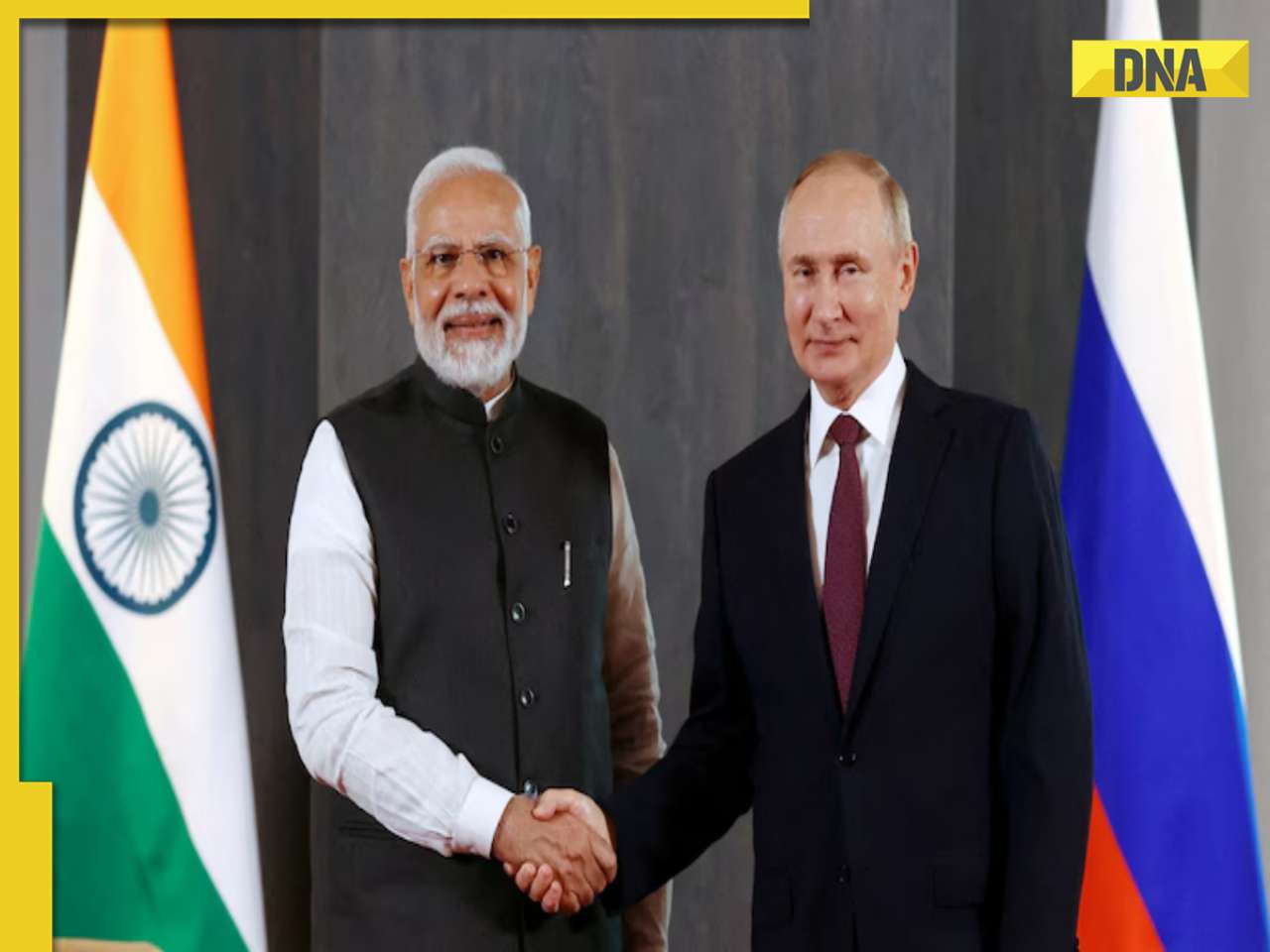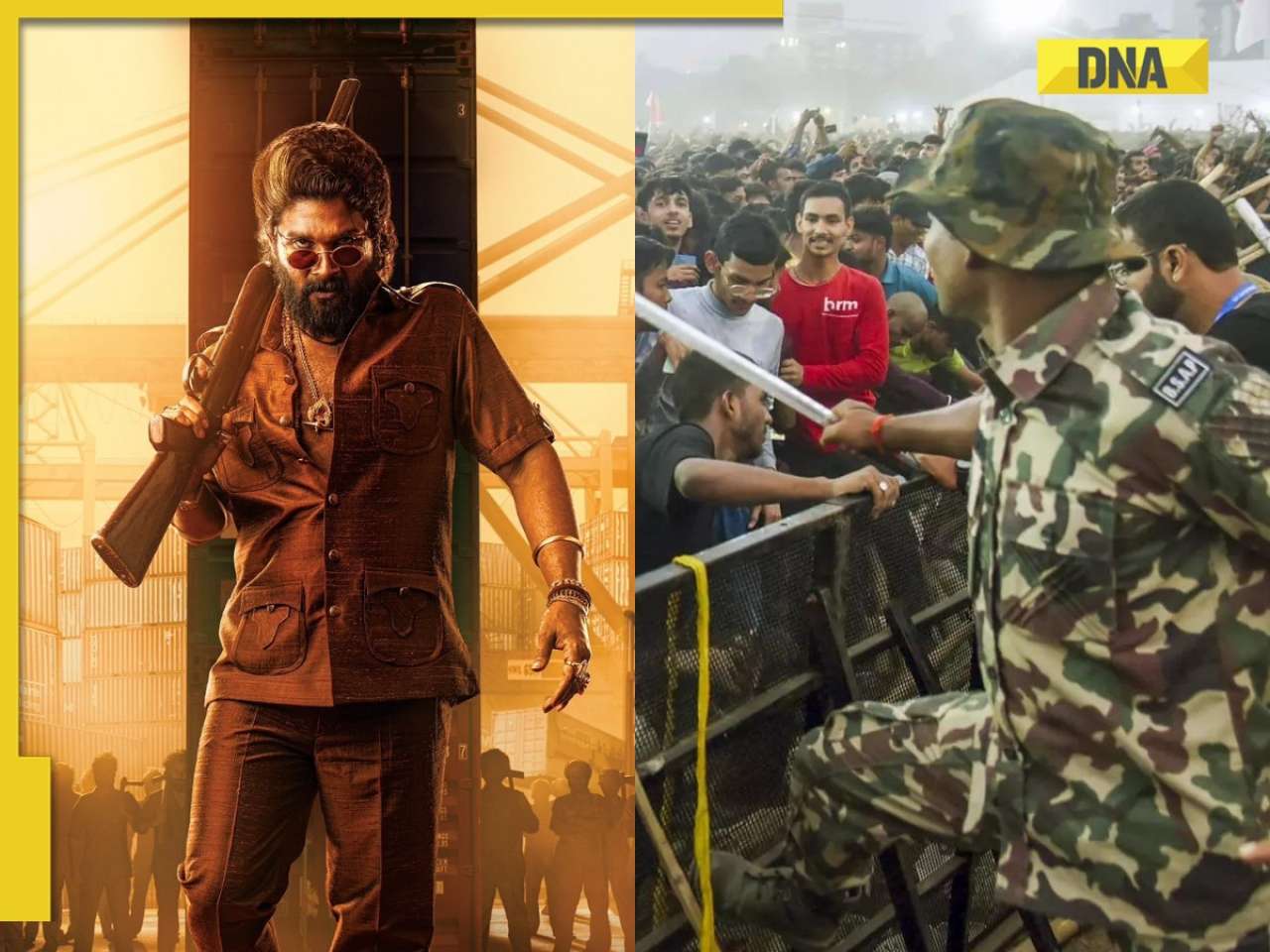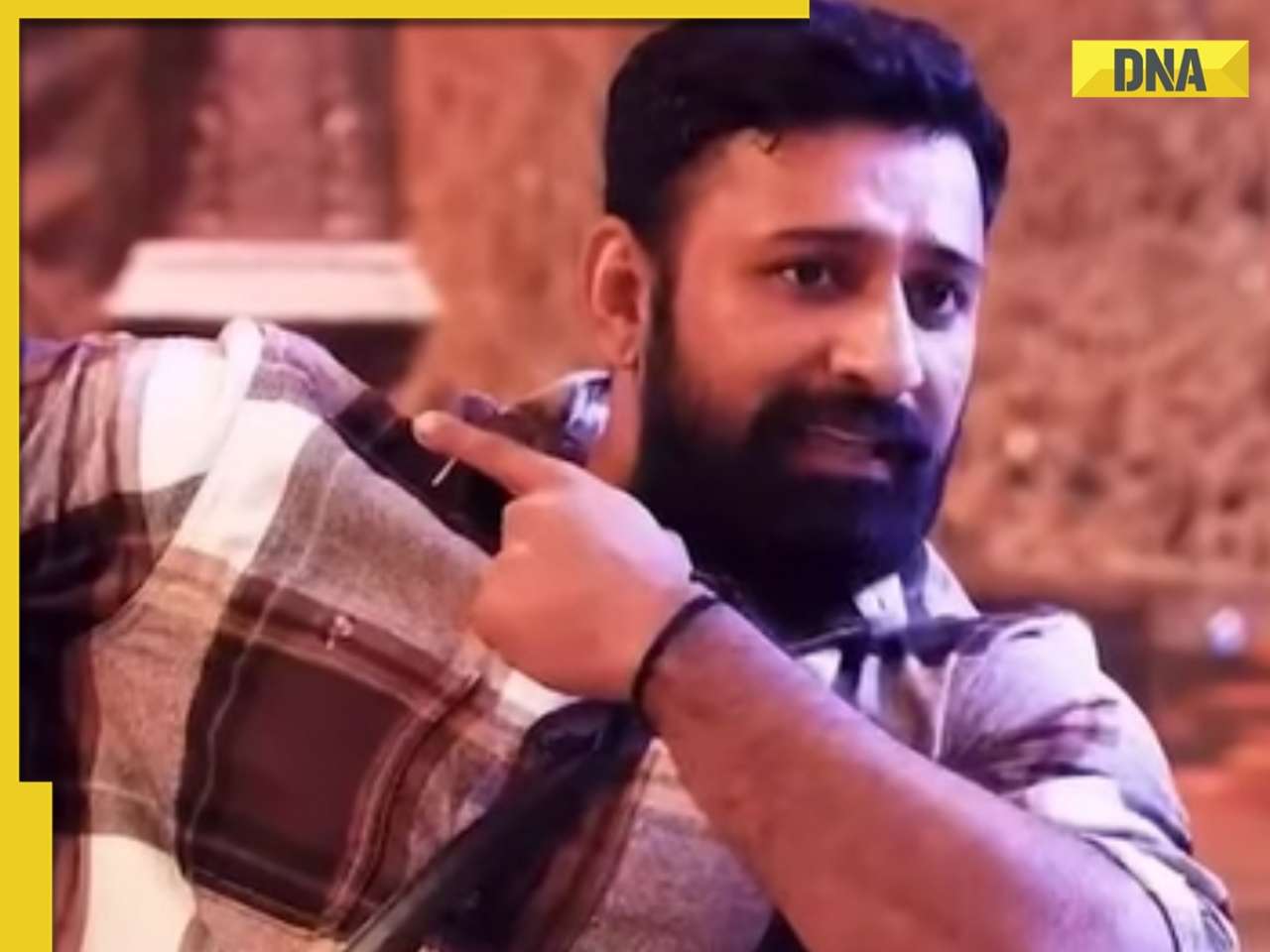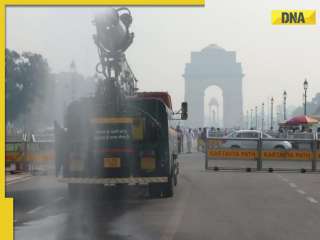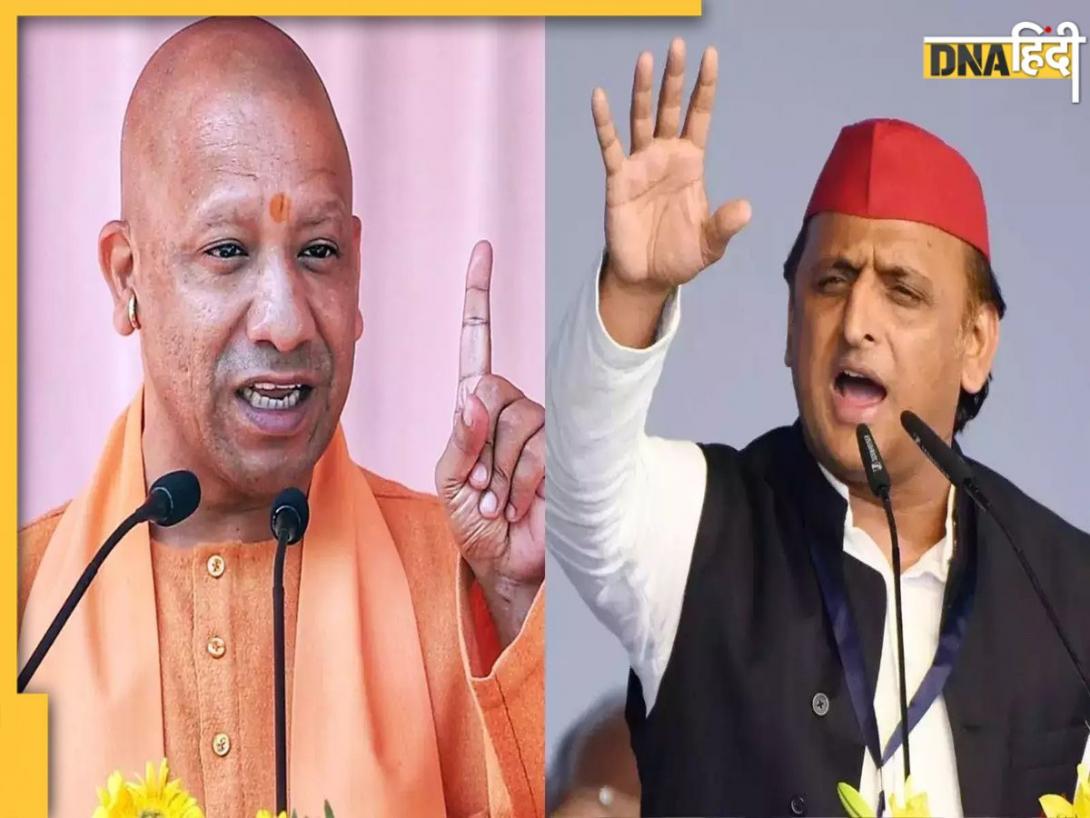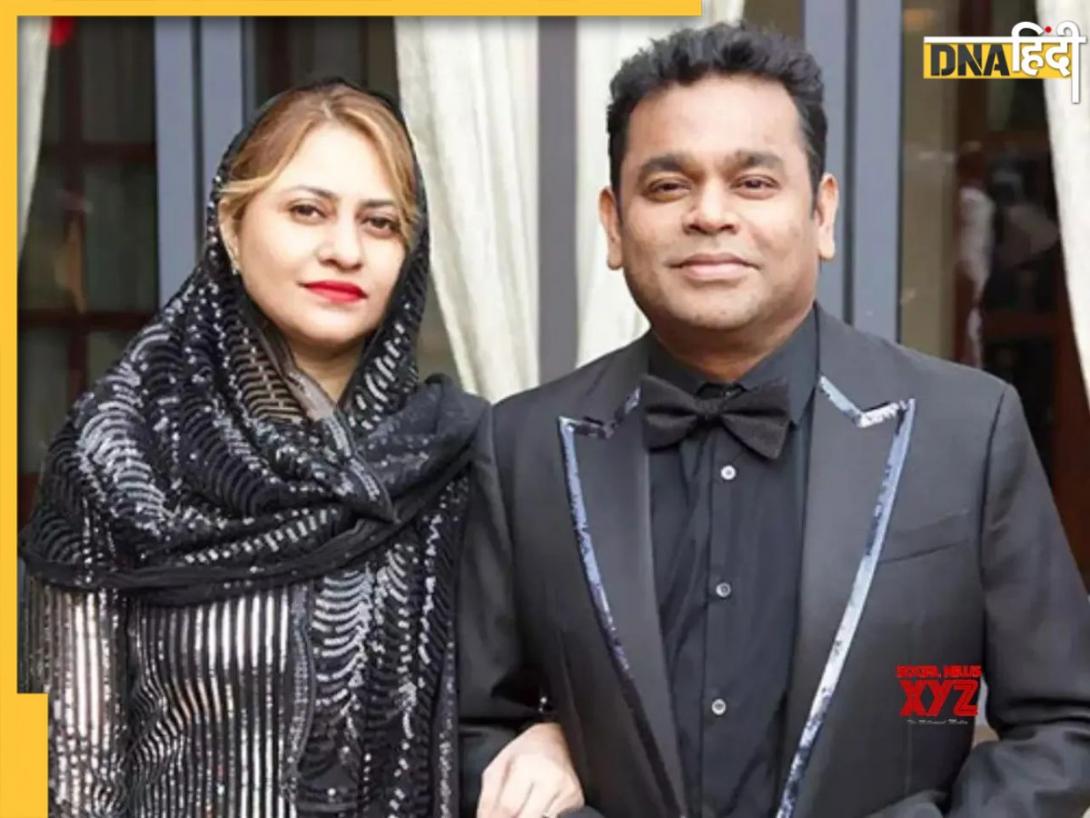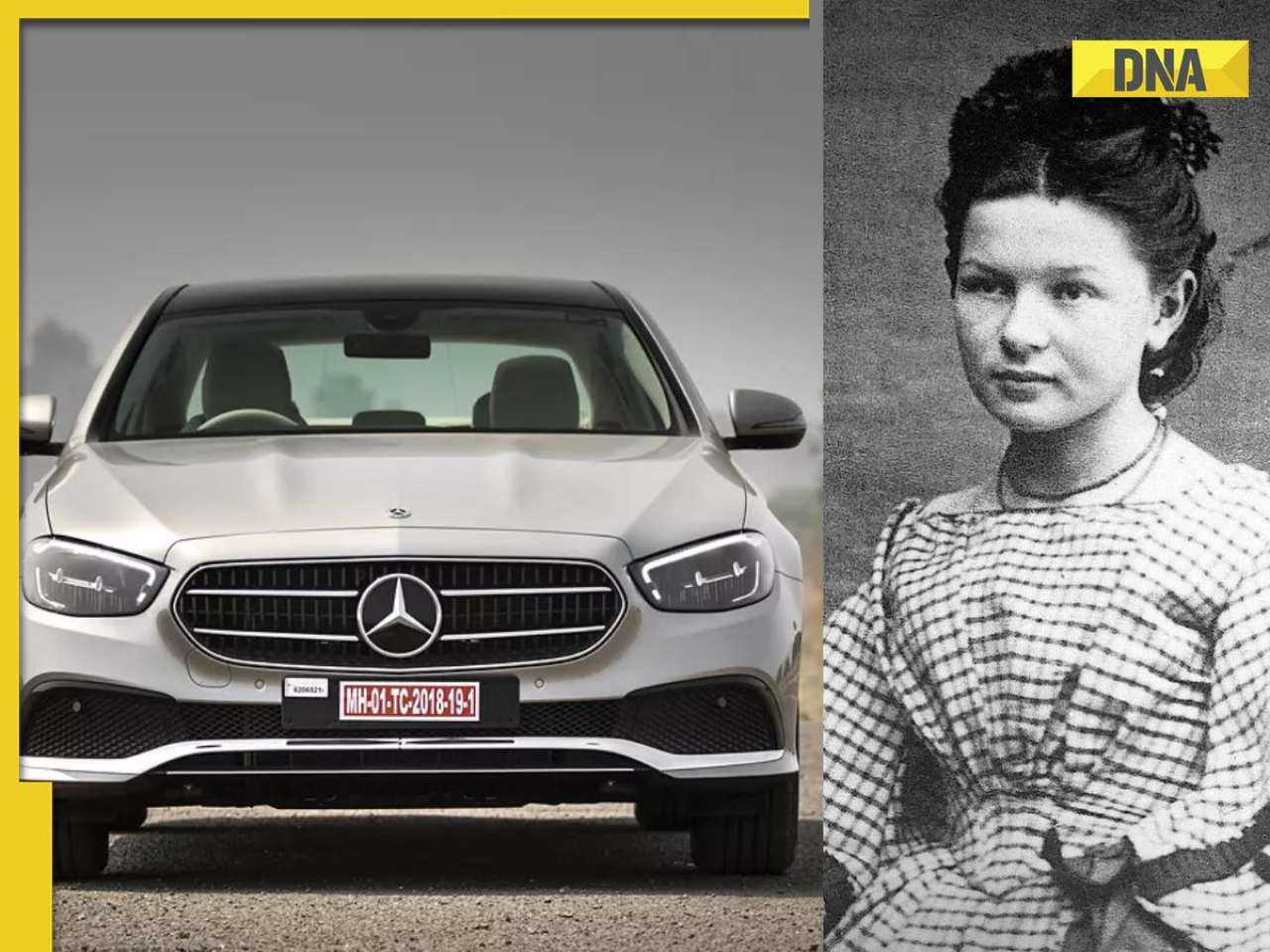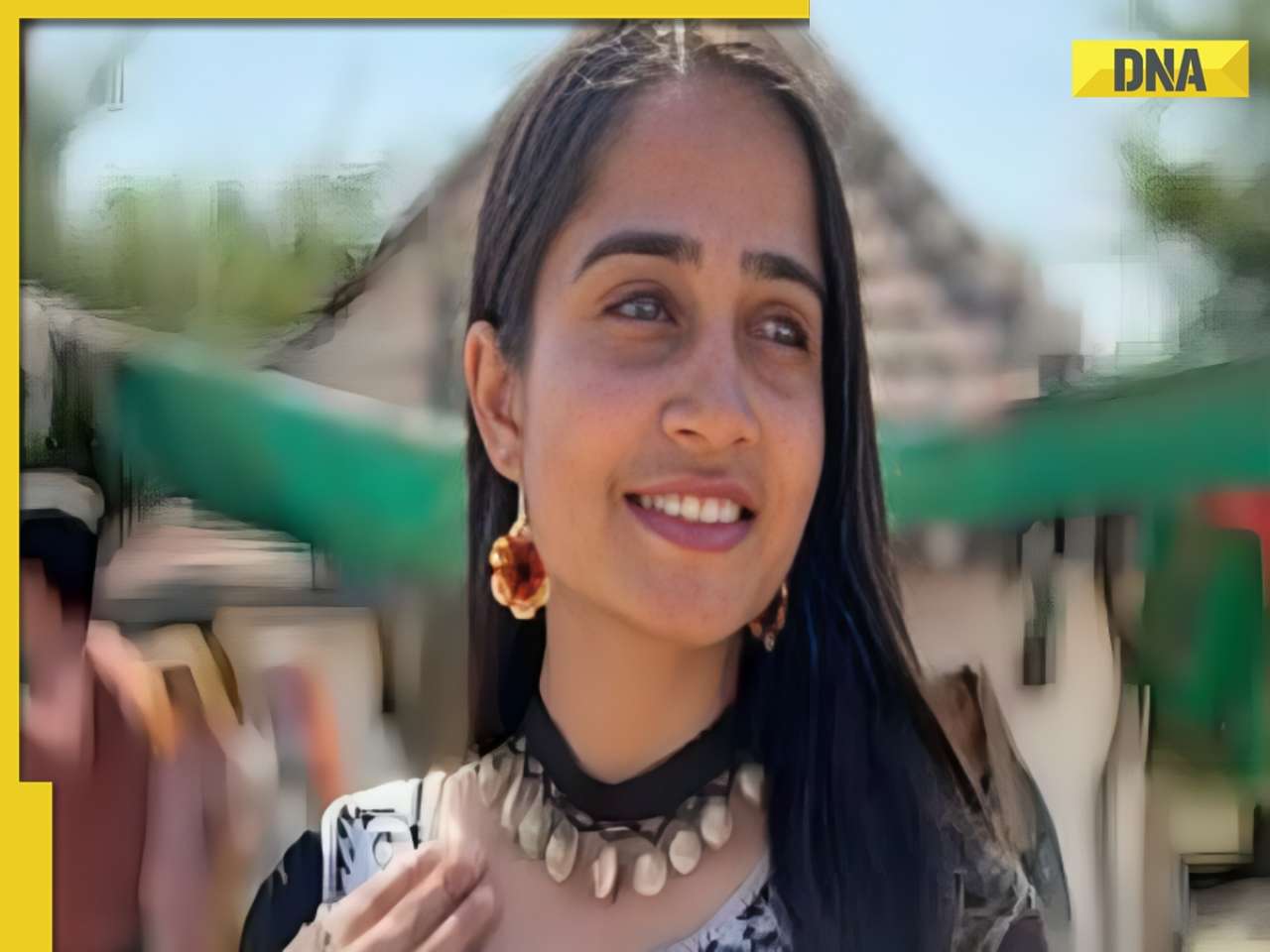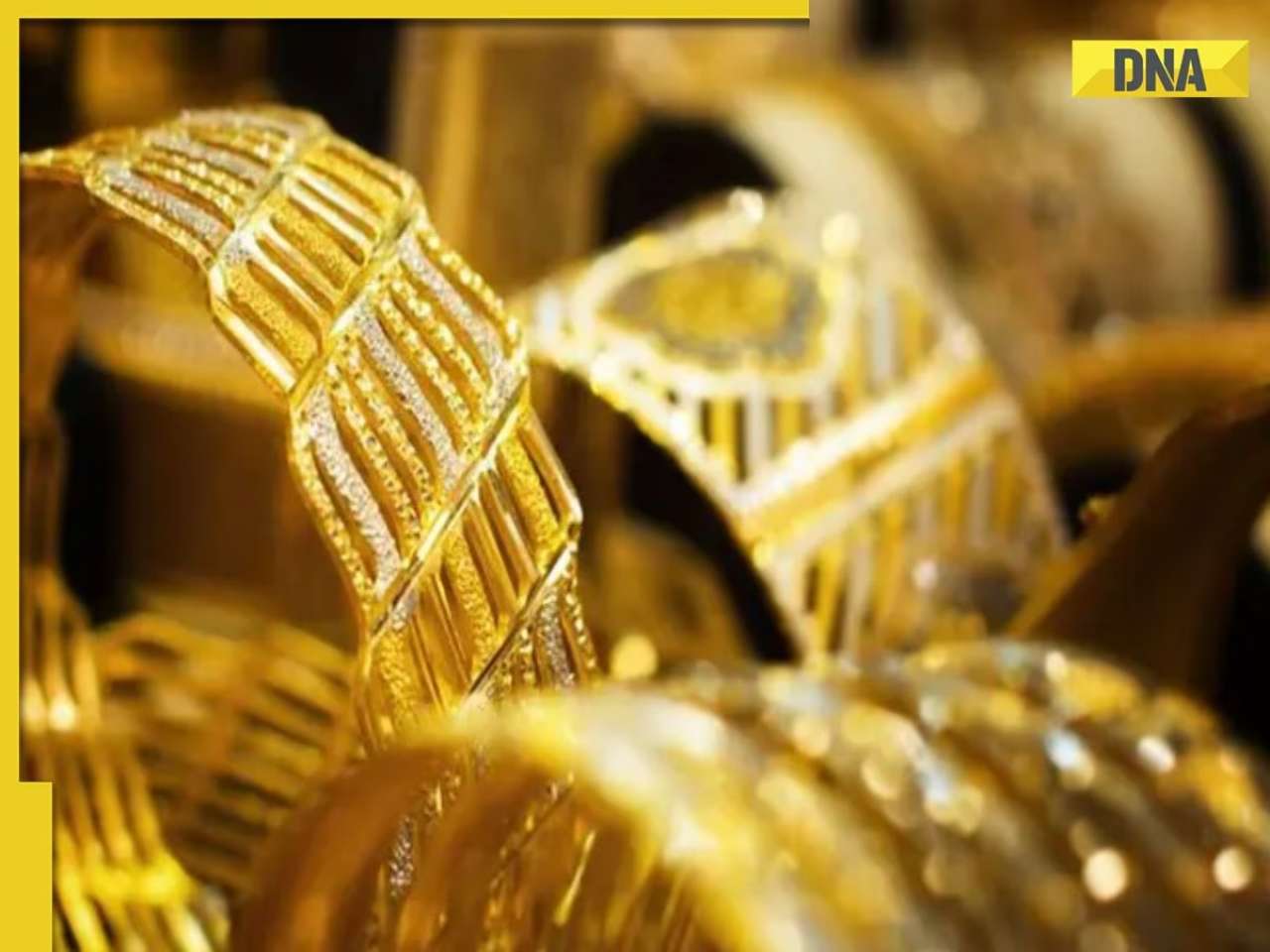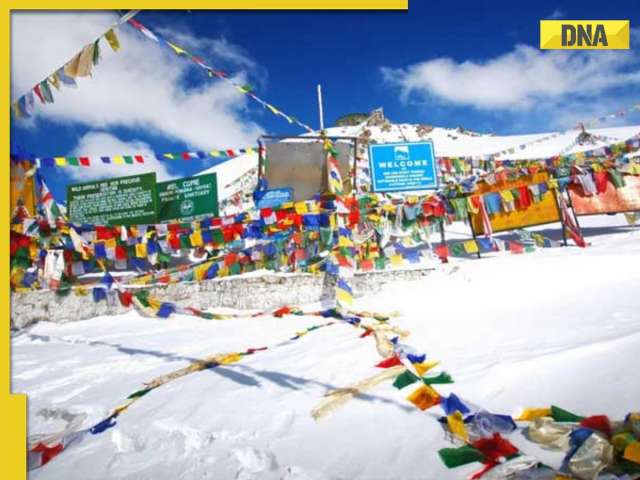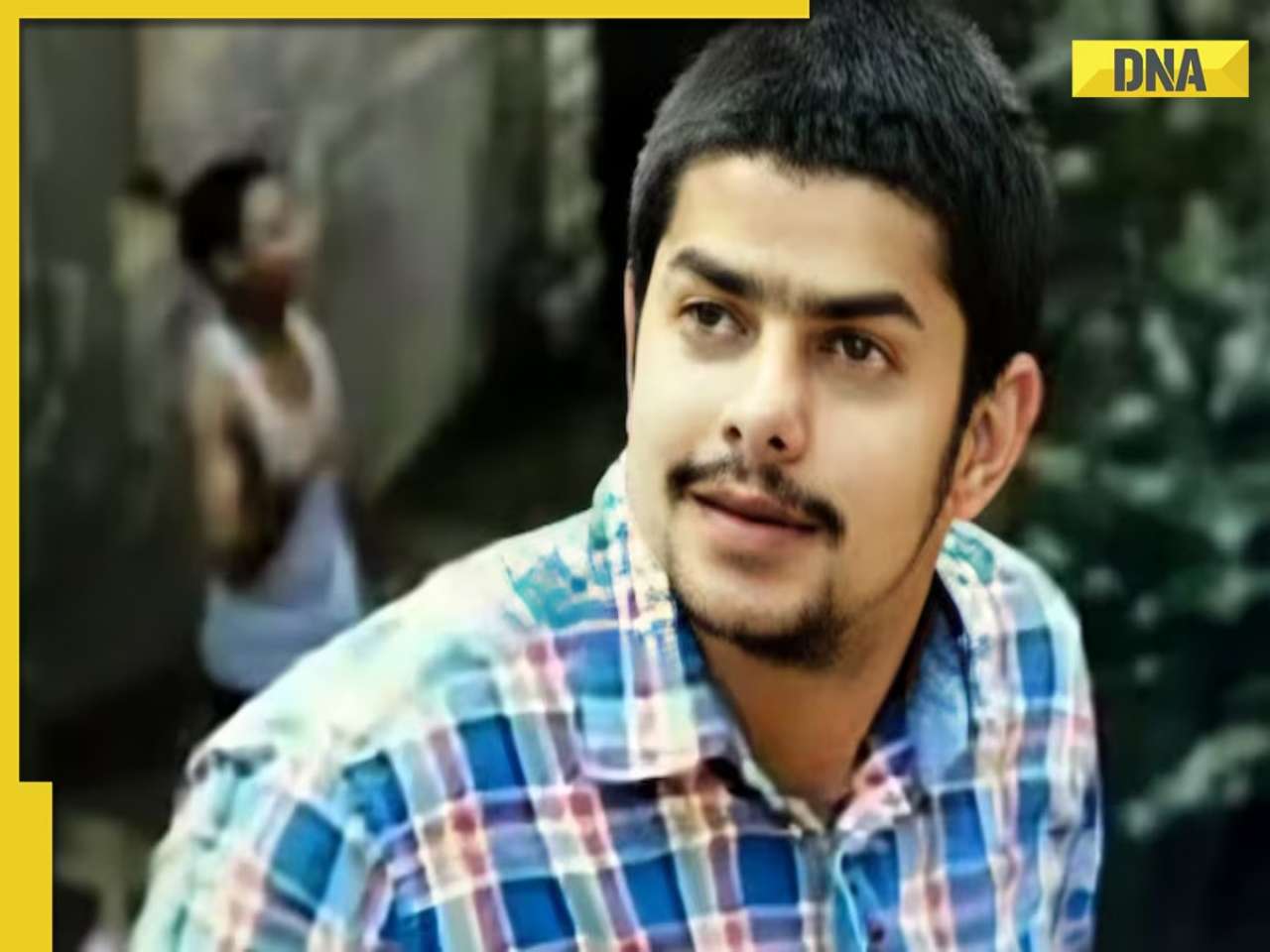- LATEST
- WEBSTORY
- TRENDING
LIFESTYLE
From 15th century miniatures to MF Husain's canvases... Diwali in paint and brush
Classic, contemporary and miniatures — artists have been depicting the festival of light in many moods and hues. Ornella D'Souza examines a few canvases
TRENDING NOW
Diwali by Paresh Maity
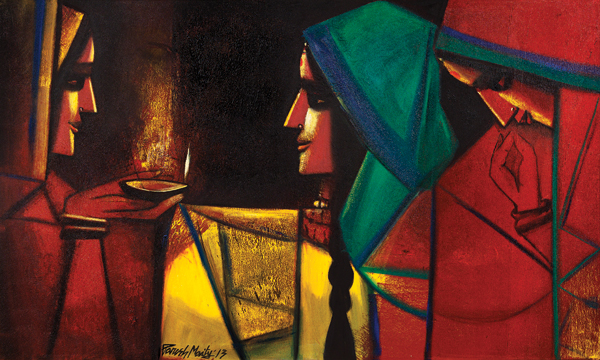
Diwali by Paresh Maity, Oil on canvas, 36x60”, 2013
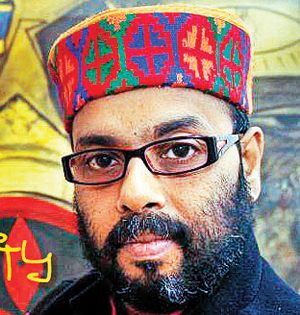
Paresh Maity
This Maity canvas shows three women set for Diwali festivities — sari-and-ghungat clad, plaited hair, bangles and coy smiles. The warm, chrome yellow textured flame of a tiny diya bathes the trio, lights up their angular faces, pronounces their kohl eyes and the shadows of their sari folds. Maity’s Diwali portrayal that is typical of his chiaroscuro technique, figures in his Symphony of Silence series of 2013. “Diwali is India’s biggest festival, a festival of light. Light is life and life is light. Without light, you cannot see anything. Hence, light has a vital role in my art,” notes the Padma Shri awardee.
In few of his Benaras canvases, of classic vermilion and blue palettes, he shows another sight to Diwali. Benaras has been his lifelong muse, one to which he has returned over 50 times in the last 32 years. “During Diwali, thousands of diyas are set afloat into the waters of the Ganges. The sight is a dreamland, a paradise. There are no crackers... just a shimmering river of light and shadows.” Maity’s fascination for the river bank reflects his growing years on coastal Tamluk, West Bengal, and the boat being the first object he drew as an eight-year-old. “During Diwali, I take a boat and wade through the Ganges, the flowers and diyas and then turn around to observe the Benaras ghats and its crowds. Sometimes, I stay for as long as two hours, just observing. Despite the many burning pyres, the city has so much energy.”
Lakshmi by Raja Ravi Varma
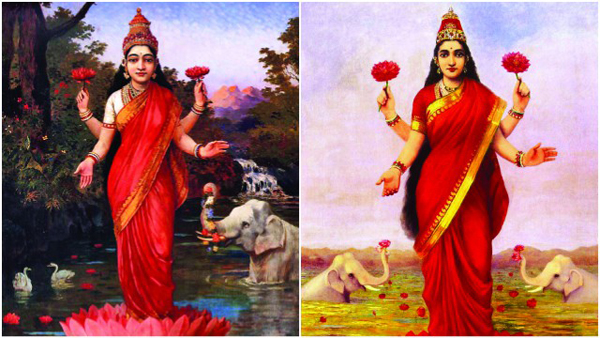
From left: A 1910 Lakshmi oleograph from Raja Ravi Varma’s printing press, (right) Varma’s original painting of the goddess
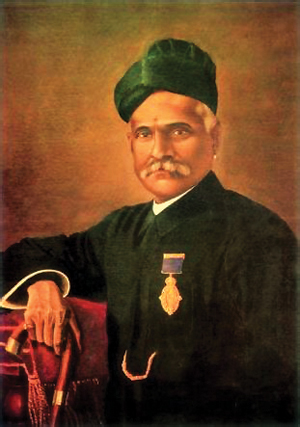
Raja Ravi Varma Self-portrait
To artist Raja Ravi Varma of the royal Travancore family of Kerala, goes the credit of kickstarting Indian kitsch on everyday utilities. He was the first to humanise divine characters from Puranic literature, and gave us the very first imagery of Saraswati, Damayanti, Sita and Shakuntala infused with European style of colour and composition.
Varma’s Lakshmi too belongs to this class of imagery. The depiction of the goddess that became a staple for everything from tin boxes to wall calendars till the 1980s, found a spot at the altar of many Indian households, and was especially invoked during Diwali for her blessings of prosperity. Her feet are kept hidden and its believed that if they are exposed, she’d walk away taking the prosperity with her. The goddess was one of the 14 ratnas (gems), birthed during the samudra manthana or the ‘churning of the ocean of milk’, a tug of war between the devatas (gods) and the asuras (demons) for amrit or the elixir of life from the ocean in the Bhagavata Purana. Against this back story, Varma uses the lotus as a leitmotif to depict the goddess. In the painting, also called Gajalakshmi, she’s shown emerging from the ocean on a lotus, holding a lotus each in two of her four hands; two gajas (elephants) shower her with lotuses in an act of abhishekam (blessings).
Varma’s 1910 oleograph on the goddess though depicts a different imagery, points out artist and art historian, Ratan Parimoo. “The reproduction was not painted by him,” says Parimoo, also an authority on identifying Varma fakes. “The oleograph is missing one elephant while the one that exists, holds a garland — a clear shift from the representation of the four corners of the Earth. The landscape is made to look like a river surrounded by lush foliage, instead of the Kerala backwaters’ feel that the original has,” says the 81-year-old, who has authored two books on Varma. Compared to Varma’s voluptuous heroines, Lakshmi appears maternal with a pious aura. “When my daughter was to marry, the pandit asked us to bring a Lakshmi. The frame-wala gave me the Ravi Varma reproduction on colour plate.”
Magazine covers by GN Jadhav
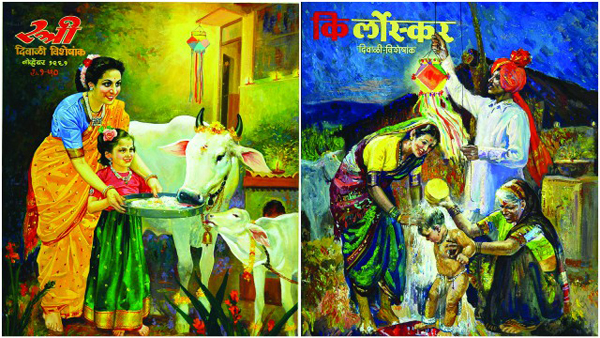
Kirloskar Group's Stree magazine issues by inhouse artist GN Jadhav: (left) November 1961 cover represents the first day of Diwali or Vasu Baras, where it is believed that goddess Lakshmi assumes the form of a cow for a day (right) November 1958 cover shows Naraka Chaturdashi, the second day of Diwali, where family members take a ritual bath after a massage with fragrant oil and sandalwood powder
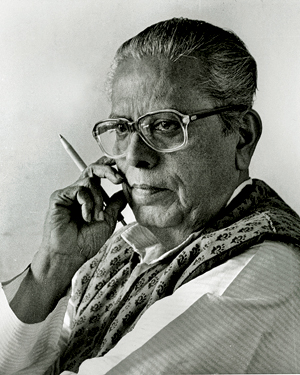
GN Jadhav
The Kirloskar Group, which used to manufacture farm equipment, relied on the inhouse artist GN Jadhav to paint their magazine covers — a fairly common practise until the mid-1970s. The Group had three magazines, Kirloskar (for the general public), Stree (for women) and Manohar (for the youth). Jadhav, an expert in pencil and ink drawings, portraits and landscapes, was a Kolhapur boy. He received tutelage under the likes of Baburao Painter, before taking up Kirloskar’s offer. The November 1961 cover of Stree represents the first day of Diwali or Vasu Baras, where it is believed that goddess Lakshmi assumes the form of a cow for a day. On the cover, a woman and her little girl in festive finery take delight in feeding a belled cow and calf outside their lit up home. On the November 1958 cover of Stree, Jadhav shows Naraka Chaturdashi, the second day of Diwali, where family members take a ritual bath after a massage with fragrant oil and sandalwood powder.
Jadhav’s fluid brushstrokes portray a mother and her mother-in-law bathing their cherubic baby boy, while the father hangs a paper lantern. “While Jadhav’s paintings showed the freedom struggle, social reform, development, agriculture and so on, his Diwali covers showed the costumes and rituals prevalent in the countryside of Maharashtra,” says artist, art historian and NGMA Mumbai director, Suhas Bahulkar. A comprehensive list of Jadhav’s vintage magazine covers can be found in The Indian Master Painter: a Retrospective 2012 exhibition catalogue of GN Jadhav by the Nehru Centre Art Gallery.
Indian civilisation series by Maqbool Fida Husain
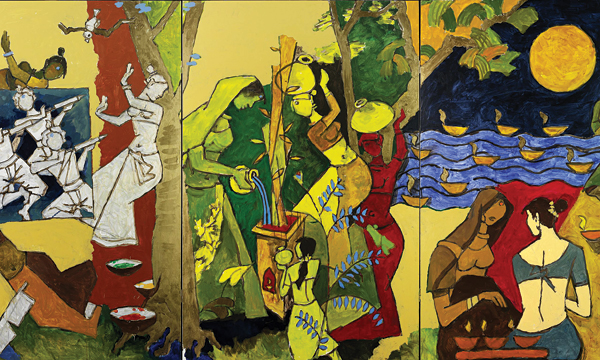
Traditional Indian Festivals triptych, by MF Husain. Courtesy of Usha Mittal © Victoria and Albert Museum, London
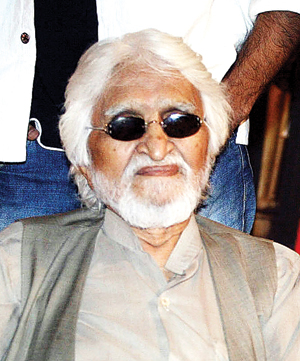
Maqbool Fida Husain
The barefoot artist made the ‘Indian civilisation’ series of eight triptychs on a commission from Usha Mittal, wife of steel tycoon Lakshmi Mittal, during his self-imposed exile in Dubai in 2008. Husain pined for his motherland. But the Hindu nationalists were irked by the Muslim artist’s nude Saraswati and Sita iconographies, and filed enough lawsuits to ensure that the 93-year-old artist never returned to his homeland.
So Husain quenched his love for India by filling the three-part canvases with gods, dance forms, modes of transports and Indian cities such as Delhi, Kolkata and Varanasi.
This triptych portrays Indian festivals, and depicts Diwali in the last panel. It shows two women chatting under a golden moon on the shores of a river on which lighted diyas float. A third woman, likely an attendant, is adding more diyas to the scene while a woman with folded hands prays from the opposite shore.
For Dr Daniel Herwitz, a national awardee for a book on Husain, the imagery is about something other than Diwali. He says, the left panel which seems like a depiction of the festival of Holi, is an image of terror recast from Husain’s ‘Obscure Object of Desire’ series of the 1980s. “It was perhaps the strange pre-figurement of his own victimisation by the fundamentalist right,” says Dr Herwitz. While the middle panel, he says, shows iconic images of ordinary Indian women at work, the final panel is transposed from Husain’s ‘British Raj’ series. “It’s charming, and more than faintly ironic picturing of his own childhood in the last days of British rule that explores the limits of intimacy between the British and Indian.”
*****
From the 15th century onwards, the Indian miniature school of painting has recorded weddings, festivals and end of wars with celebratory firecrackers. Two miniatures, however, directly show the use of firecrackers:
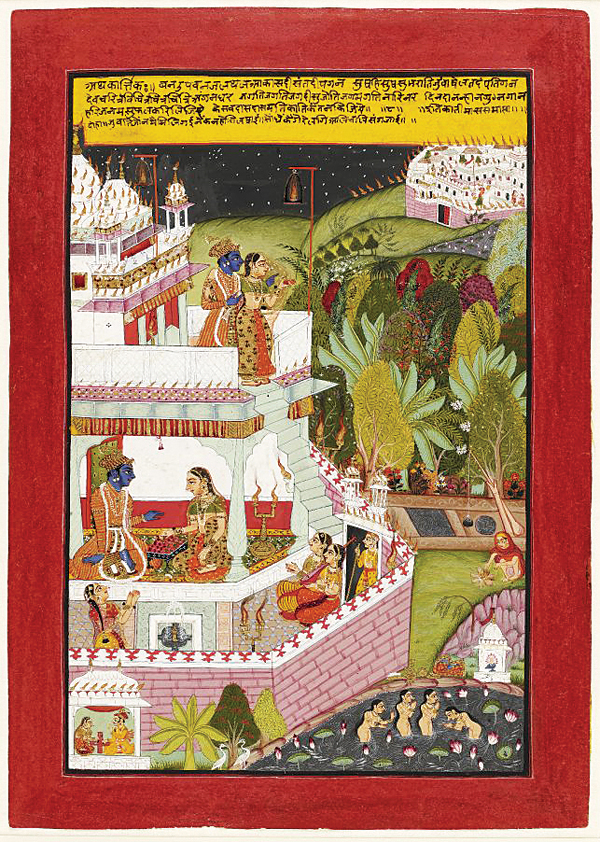
The month of Kartika. October/November, c.1675-1700, The British Museum
Baramasa: One album of a series of eight paintings, called the Baramasa set or ‘Songs of the Seasons’, complements the poetry on Baramasa by Kesavdas of Orchha. Radha and Krishna, nayakas and nayikas (lovers) occur three times in this miniature. They watch the festivities in the neighbouring town from a terrace lit up with oil lamps. One floor below, the lovers are engaged in a chequered board game that signifies gambling, a popular Diwali ritual to appease the goddess of wealth, Lakshmi. A pool full of nude women bathing around a linga and yoni, depict the Bundi-style of romanticism.
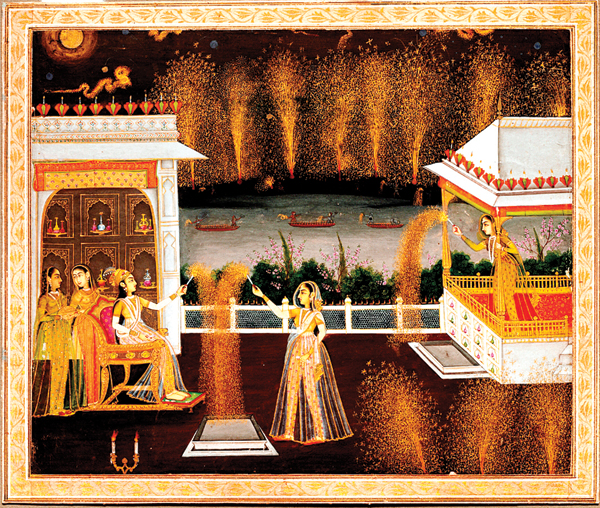
Ladies celebrating Diwali, c. 1760, opaque watercolour and gold on paper, The Cleveland Museum of Art
Ladies celebrating Diwali: Not just the women in the foreground, but also the fishermen in the background are lighting fireworks from their boats in the middle of a river. This 18th-century miniature shows a royal woman lighting a sparkler (phuljhari) while sitting on a chair with one foot resting on a footstool. An attendant holds another sparkler, even as the sparks from both fall in guided arches to the ground. Earthern lamps on rooftops, the latticed railing and boats add to the festive mood.
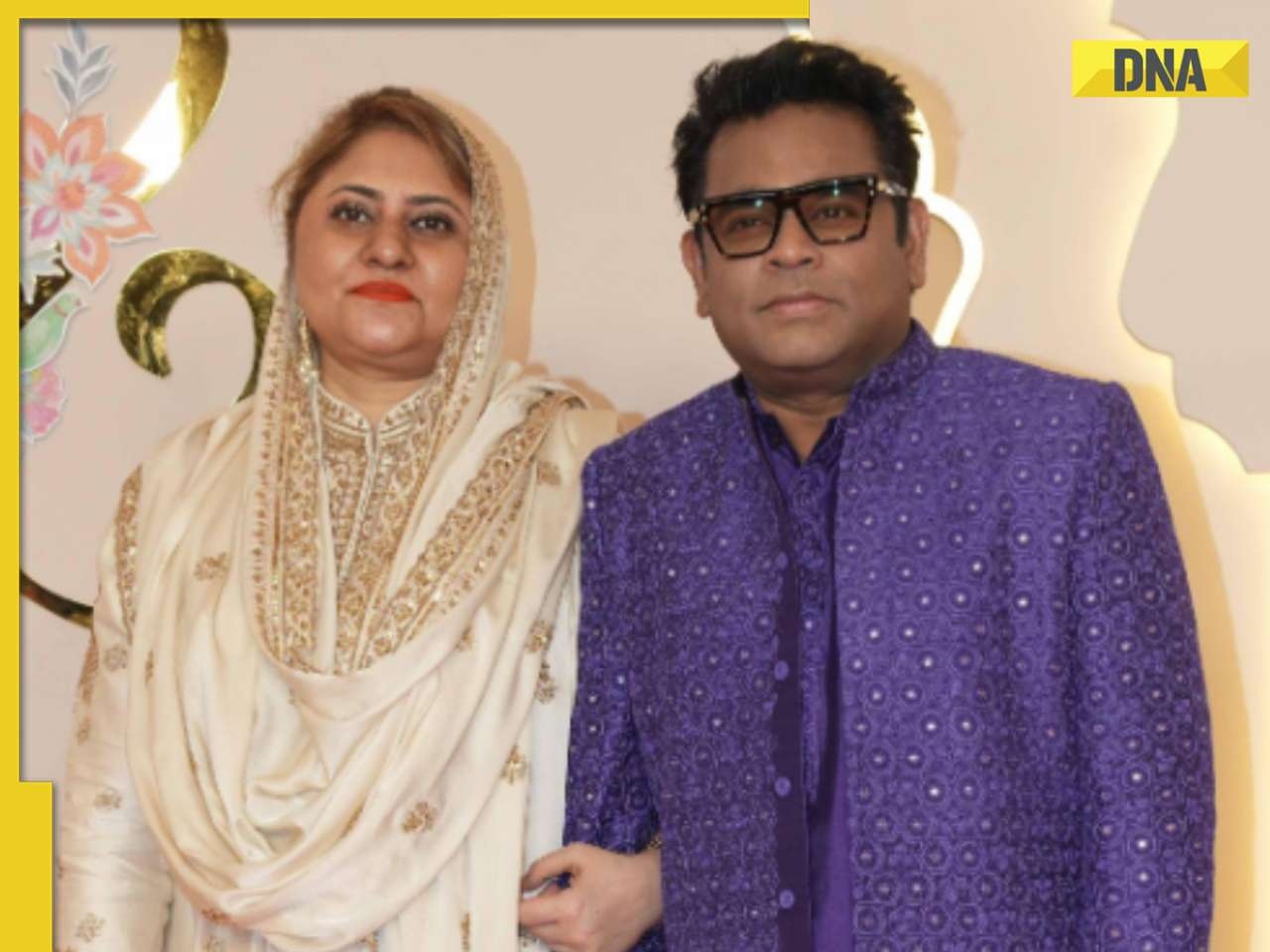
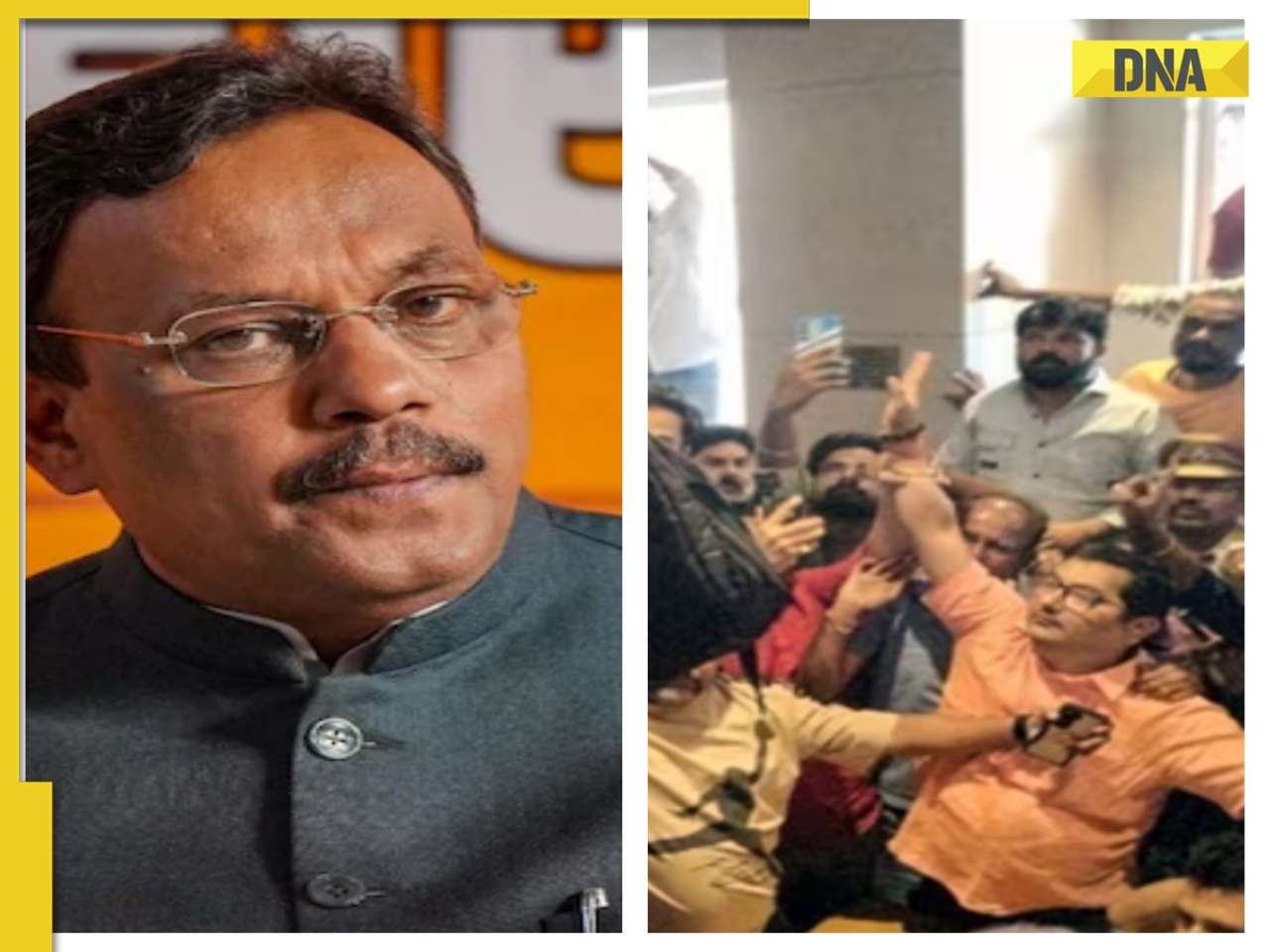
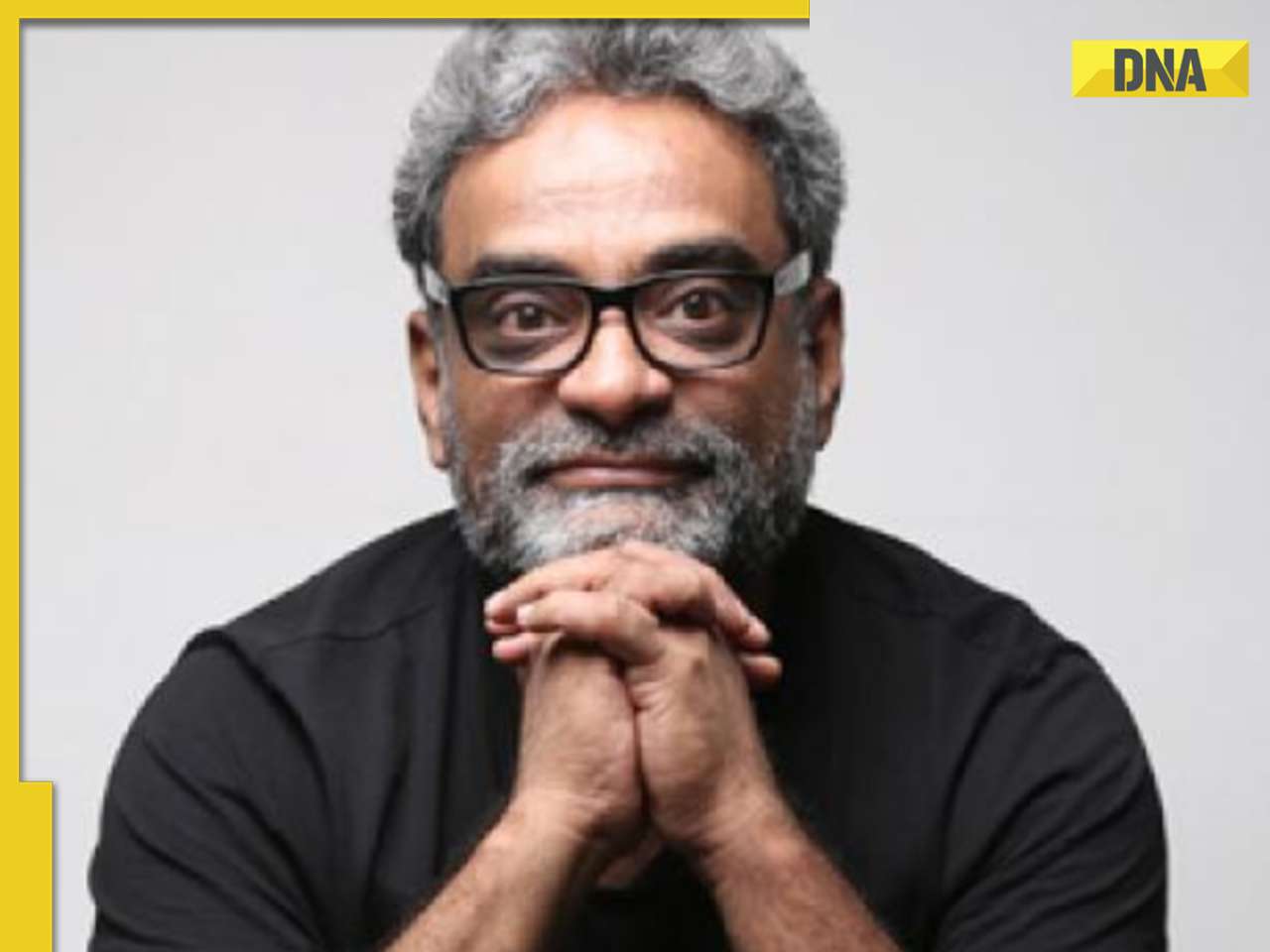




)
)
)
)
)
)
)
)
)
)
)
)
)
)
)
)





